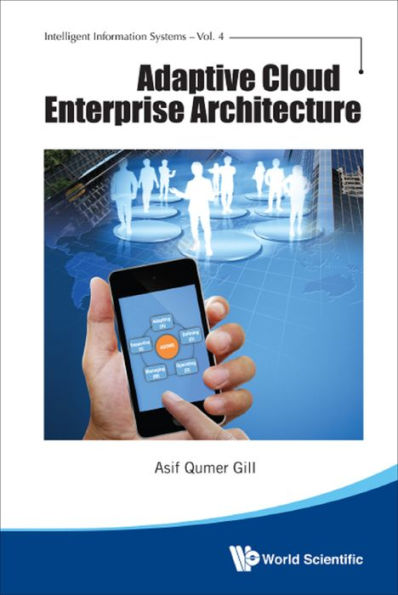Table of Contents
Endorsements for the Book vii
Foreword xvii
Preface xix
About The Author xxi
Acknowledgements xxiii
List of Tables xxxi
List of Figures xxxiii
Chapter 1 Introduction 1
1.1 Introduction 1
1.2 Cloud Computing 2
1.3 Cloud Evolution 4
1.3.1 Development 5
1.3.2 Hosting 8
1.3.3 Provisioning 11
1.4 Cloud Characteristics 13
1.4.1 On-demand Self-service 13
1.4.2 Broad Network Access 14
1.4.3 Resource Pooling 14
1.4.4 Rapid Elasticity 14
1.4.5 Measured Service 15
1.4.6 Service Orientation 15
1.4.7 Security 15
1.4.8 Virtualisation 16
1.5 Cloud Service Models 16
1.5.1 SaaS 17
1.5.2 PaaS 17
1.5.3 IaaS 17
1.5.4 FaaS 18
1.6 Cloud Deployment Models 18
1.6.1 Private Cloud 18
1.6.2 Community Cloud 19
1.6.3 Public Cloud 20
1.6.4 Hybrid Cloud 21
1.7 Cloud Stakeholders 22
1.8 Cloud Adoption Benefits 23
1.8.1 Reduced Cost 24
1.8.2 Reduced Carbon Emission 24
1.8.3 Enhanced Enterprise Agility 25
1.8.4 Improved Resource Utilisation 25
1.8.5 Improved Availability 26
1.8.6 Improved Reliability 26
1.8.7 Improved Economies of Scale 26
1.9 Cloud Adoption Challenges 27
1.9.1 Security 27
1.9.2 Privacy 27
1.9.3 Compliance 28
1.9.4 Portability 28
1.9.5 Interoperability 28
1.9.6 Social 29
1.10 Book Organisation 29
1.11 Summary 31
Chapter 2 Cloud-Enabled Enterprise Adaptation 33
2.1 Introduction 33
2.2 Enterprise 36
2.3 Enterprise Adaptation 37
2.4 Enterprise Adaptation Challenges 41
2.5 Enterprise Architecture 42
2.5.1 The Zachman Framework 43
2.5.2 Department of Defense Architecture Framework 44
2.5.3 Federal Enterprise Architecture Framework 45
2.5.4 The Open Group Architecture Framework 47
2.5.5 Review 49
2.6 Enterprise Architecture Challenges 50
2.7 Summary 52
Chapter 3 The Adaptive Enterprise Service System Metamodel 53
3.1 Introduction 53
3.2 Design Principles 55
3.2.1 Agility 55
3.2.2 System 57
3.2.3 Service 59
3.3 Adaptive Enterprise Service System 61
3.3.1 Adaptive Enterprise Service System (Enterprise Level) 61
3.3.2 Adaptive Service System (Capability Level) 69
3.3.3 Adaptive Service 73
3.3.4 Guiding Elements 77
3.4 Summary 79
Chapter 4 The Adaptive Enterprise Service System Lifecycle Management 81
4.1 Introduction 81
4.2 Adapting 81
4.3 Defining 84
4.4 Operating 84
4.5 Managing 86
4.6 Supporting 87
4.7 Application 88
4.8 Value 89
4.9 Summary 90
Chapter 5 Adapting Cloud Enterprise Architecture Capability 93
5.1 Introduction 93
5.2 The Context Service 93
5.3 The Assessment Service 98
5.3.1 Enterprise Level Assessment 100
5.3.2 Service Level Assessment 102
5.4 The Rationalisation Service 103
5.5 The Realisation Service 106
5.6 The Unreafisation Service 108
5.7 Summary 108
Chapter 6 Defining Cloud Enterprise Architecture Capability 111
6.1 Introduction 111
6.2 Architecture Principles 112
6.3 Guiding Elements 114
6.3.1 Enterprise Cloud Strategy 114
6.3.2 Enterprise Architecture Capability Maturity and Scope 115
6.3.3 Enterprise Policy and Rule 115
6.3.4 Enterprise Context 116
6.3.5 Enterprise Model 116
6.3.6 Enterprise Cloud Reference Architecture 116
6.3.7 Legal 117
6.3.8 Standard 117
6.4 Architecture Capability 117
6.5 Architecture Services 123
6.6 Architecture Vision 123
6.7 Summary 123
Chapter 7 Operating Cloud Enterprise Architecture Capability 125
7.1 Introduction 125
7.2 Cloud Interaction Architecture 130
7.2.1 Adaptive Enterprise Service System 130
7.2.2 Description 130
7.2.3 Lifecycle 130
7.2.4 Channel 131
7.2.5 Adaptive Service System 131
7.2.6 Value Network 131
7.2.7 Sensor 131
7.2.8 Actor 132
7.2.9 Role 132
7.2.10 Channel (Interaction) 132
7.2.11 Protocol 133
7.2.12 Interaction 133
7.2.13 Event 134
7.2.14 Mutual Goal 134
7.2.15 Proposal 134
7.2.16 Negotiation 134
7.2.17 Contract 135
7.2.18 Governance 135
7.2.19 Execution 136
7.2.20 Adaptive Service 136
7.2.21 Outcome 137
7.2.22 Feedback 137
7.2.23 Interaction Architecture Summary 138
7.3 Cloud Factory Architecture 138
7.3.1 Human and IT Alignment (HIT) 139
7.3.2 Adaptive Business Architecture 141
7.3.3 Adaptive Information Architecture 144
7.3.4 Adaptive Social Architecture 148
7.3.5 Adaptive Cloud Application Architecture 153
7.3.6 Adaptive Cloud Platform Architecture 158
7.3.7 Adaptive Cloud Infrastructure Architecture 162
7.3.8 Adaptive Cloud Solution Architecture 166
7.4 Cloud Facility Architecture 168
7.4.1 Adaptive Spatial Architecture 171
7.4.2 Adaptive Energy Architecture 174
7.4.3 Adaptive Ancillary Architecture 177
7.5 Modelling Languages 178
7.5.1 ArchiMate 178
7.5.2 BPMN 179
7.5.3 UML 179
7.6 Summary 181
Chapter 8 Managing Cloud Enterprise Architecture Capability 183
8.1 Introduction 183
8.2 Adaptive Enterprise Requirements Management 186
8.3 Adaptive Enterprise Strategic Management 187
8.4 Adaptive Enterprise Architecture Management 189
8.5 Adaptive Enterprise Project Management 192
8.6 Adaptive Enterprise Service Management 197
8.7 Summary 198
Chapter 9 Supporting Cloud Enterprise Architecture Capability 199
9.1 Introduction 199
9.2 Adaptive Enterprise Model 199
9.2.1 Adaptive Business Model 200
9.2.2 Adaptive Operating Model 203
9.2.3 Adaptive Lifecycle Model 207
9.2.4 Adaptive Change Model 208
9.2.5 Adaptive Resource Supply Chain Model 212
9.2.6 Adaptive Capability Maturity Model 215
9.3 Adaptive Enterprise Library 217
9.3.1 Strategy Repository 219
9.3.2 Architecture Repository 220
9.3.3 Project Repository 222
9.3.4 Service Repository 223
9.3.5 Requirements Repository 224
9.4 Adaptive Enterprise Engineering 226
9.5 Adaptive Enterprise Intelligence 227
9.5.1 Federated SiS 231
9.5.2 Centralised SiS 233
9.6 Summary 235
Chapter 10 Case Study Examples 237
10.1 Introduction 237
10.2 The GCA Case Study 237
10.2.1 Adapting 239
10.2.2 Defining 240
10.2.3 Operating 241
10.2.4 Managing 241
10.2.5 Supporting 243
10.3 The SCS Case Study 243
10.4 The ADP Case Study 246
10.5 The WHI Case Study 249
10.6 Summary 251
Bibliography 253
Index 259



